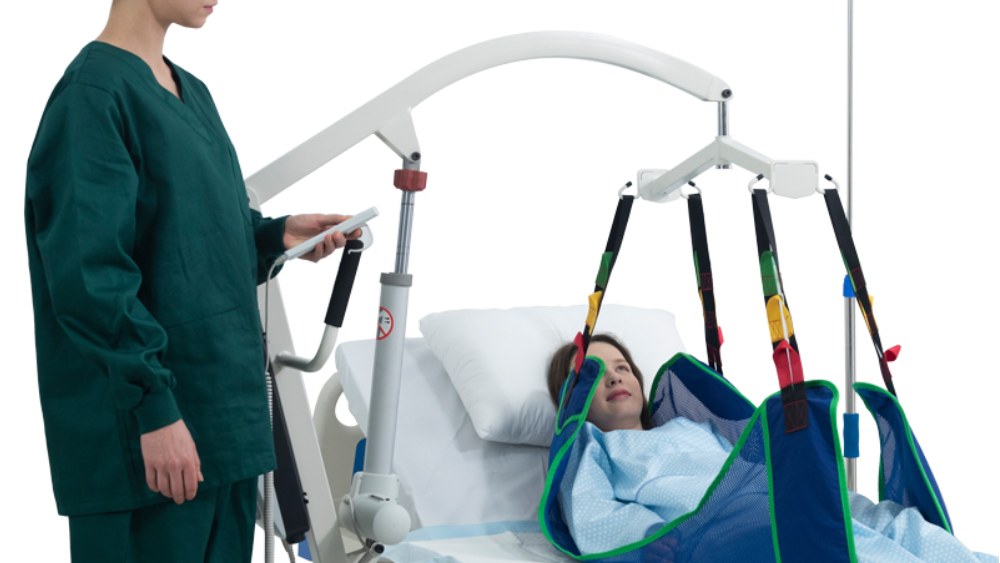Skip to content
1. Introduction
- Safe patient transfers are crucial in healthcare to prevent injuries to both patients and caregivers.
- Patient lifts and transfer slings are essential tools that facilitate these transfers, ensuring safety and comfort.
- This guide will explore the types, benefits, and proper usage of these devices.
2. Understanding Patient Lifts
2.1 Definition and Purpose
- Patient lifts are mechanical devices designed to assist in lifting and transferring patients with limited mobility.
2.2 Types of Patient Lifts
- Manual Lifts: Operated by hand, suitable for short transfers and require physical effort from caregivers.
- Electric Lifts: Powered by batteries or electricity, offering ease of use and reducing caregiver strain.
- Ceiling Lifts: Installed on tracks in the ceiling, ideal for frequent transfers and space-saving.
- Stand Assist Lifts: Help patients who can bear some weight to stand and transfer.
2.3 Benefits
- Reducing the risk of injury, enhancing patient dignity, and improving transfer efficiency.
3. Exploring Transfer Slings
3.1 Definition and Role
- Transfer slings are fabric devices used in conjunction with lifts to support and move patients.
3.2 Types of Transfer Slings
- Universal Slings: Versatile and suitable for most transfer situations.
- Hygiene Slings: Designed for toileting and bathing, with openings for easy access.
- Positioning Slings: Used to reposition patients in bed or chairs.
- Bariatric Slings: Built to support heavier patients, ensuring safety and comfort.
3.3 Choosing the Right Sling
- Consider the patient’s size, weight, and specific needs.
4. Steps for Safe Patient Transfers
4.1 Assessing the Patient
- Evaluate the patient’s mobility, weight, and any medical conditions that may affect the transfer.
4.2 Preparing the Equipment
- Ensure the lift and sling are in good condition, and the environment is free of obstacles.
4.3 Communicating with the Patient
- Explain the process to the patient to alleviate anxiety and gain cooperation.
4.4 Positioning the Sling
- Place the sling under the patient according to the manufacturer’s instructions, ensuring it is secure and comfortable.
4.5 Executing the Transfer
- Use the lift to gently raise and move the patient, maintaining a steady and controlled motion.
4.6 Post-Transfer Comfort
- Ensure the patient is comfortably positioned and check for any signs of discomfort or distress.
5. Tips for Caregivers
5.1 Training
- Regular training sessions on the use of lifts and slings can enhance caregiver confidence and competence.
5.2 Equipment Maintenance
- Regularly inspect and maintain equipment to ensure it is safe and functional.
5.3 Understanding Limits
- Be aware of the weight limits and safety features of the equipment to prevent accidents.
5.4 Seeking Assistance
- Do not hesitate to ask for help from another caregiver if needed to ensure a safe transfer.
6. Conclusion
- Patient lifts and transfer slings are invaluable tools in healthcare, promoting safety and efficiency in patient transfers.
- By following best practices and maintaining equipment, caregivers can ensure a safe and comfortable experience for patients.
- Prioritizing safety and communication is key to successful patient transfers.

